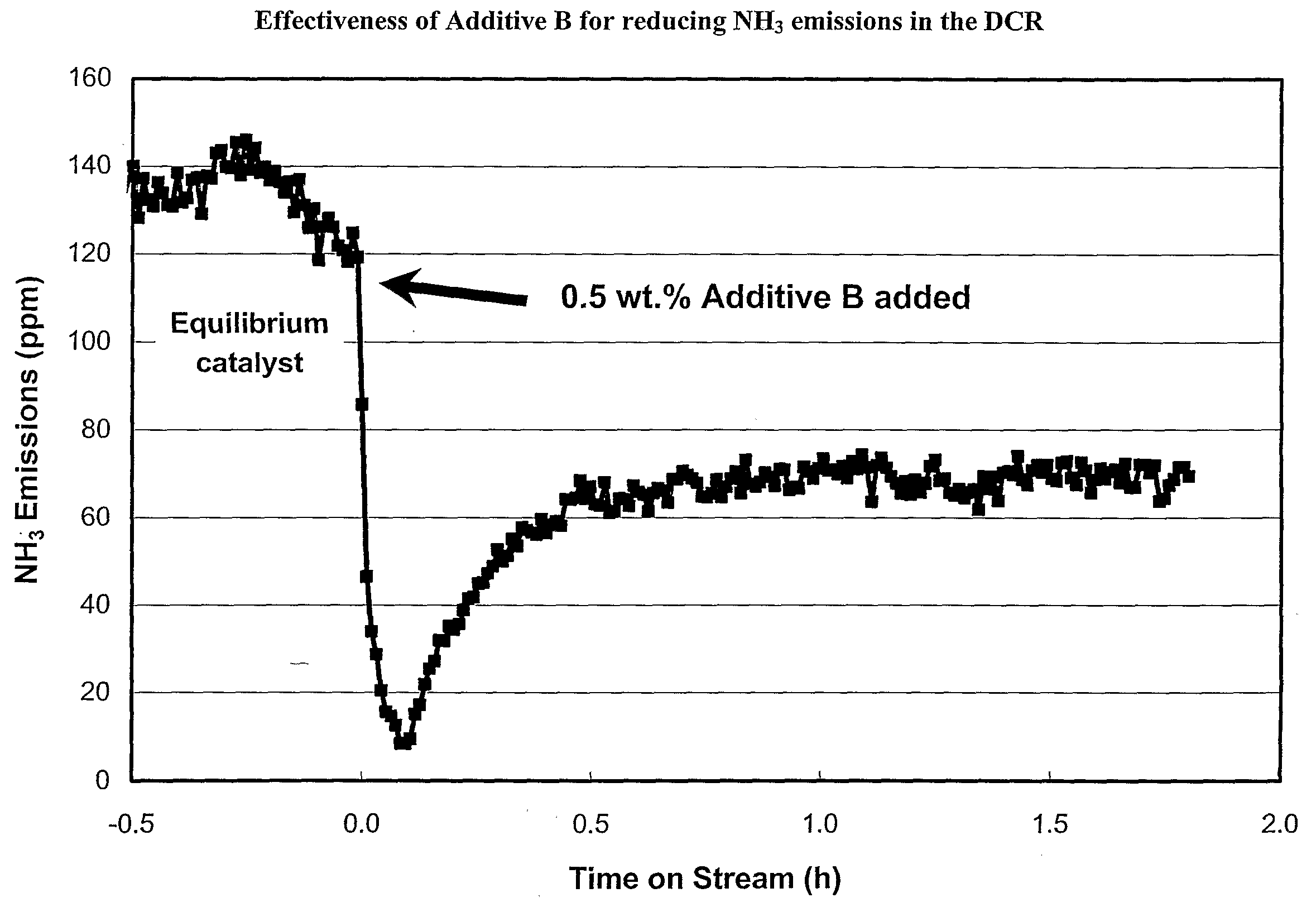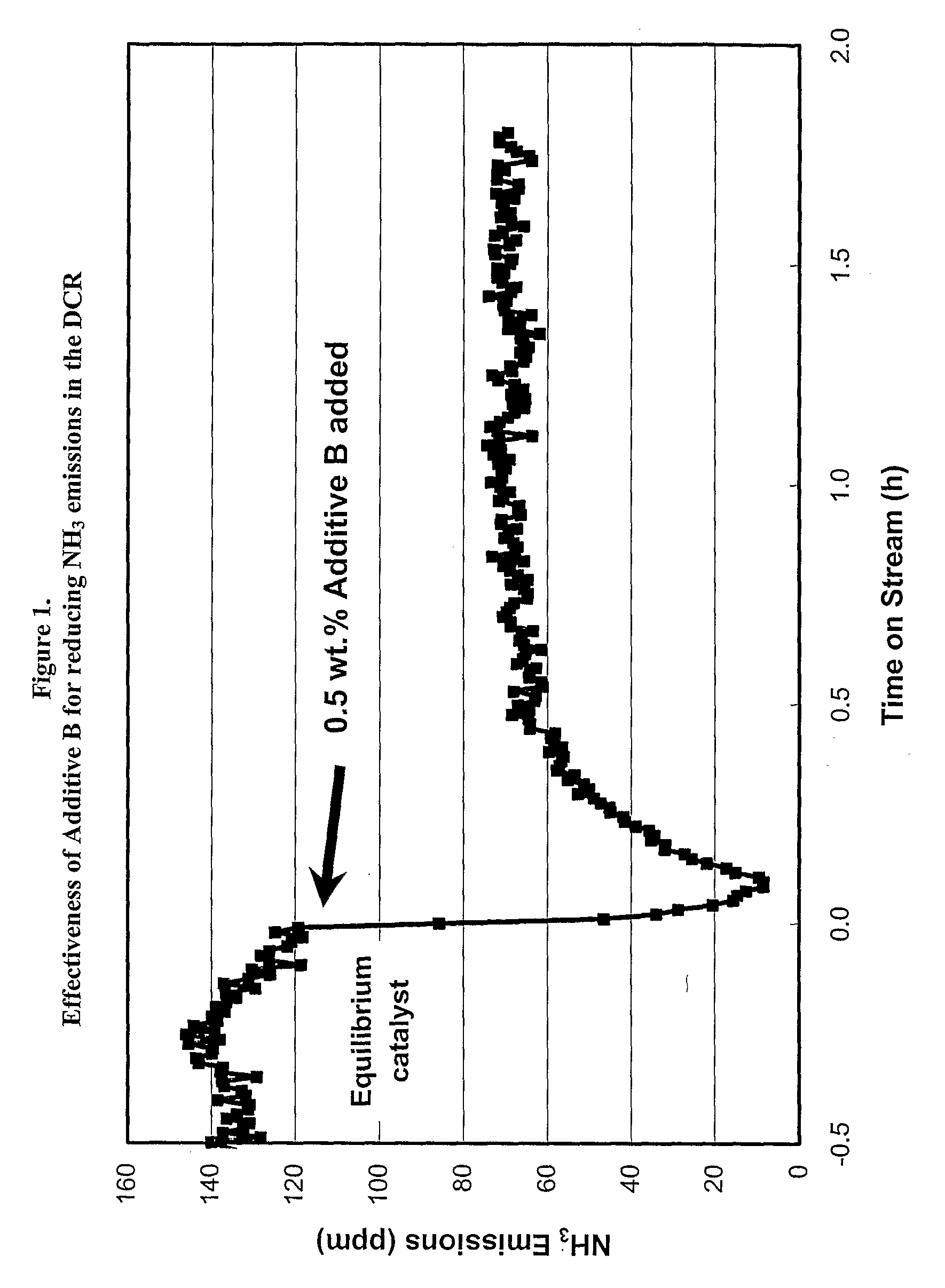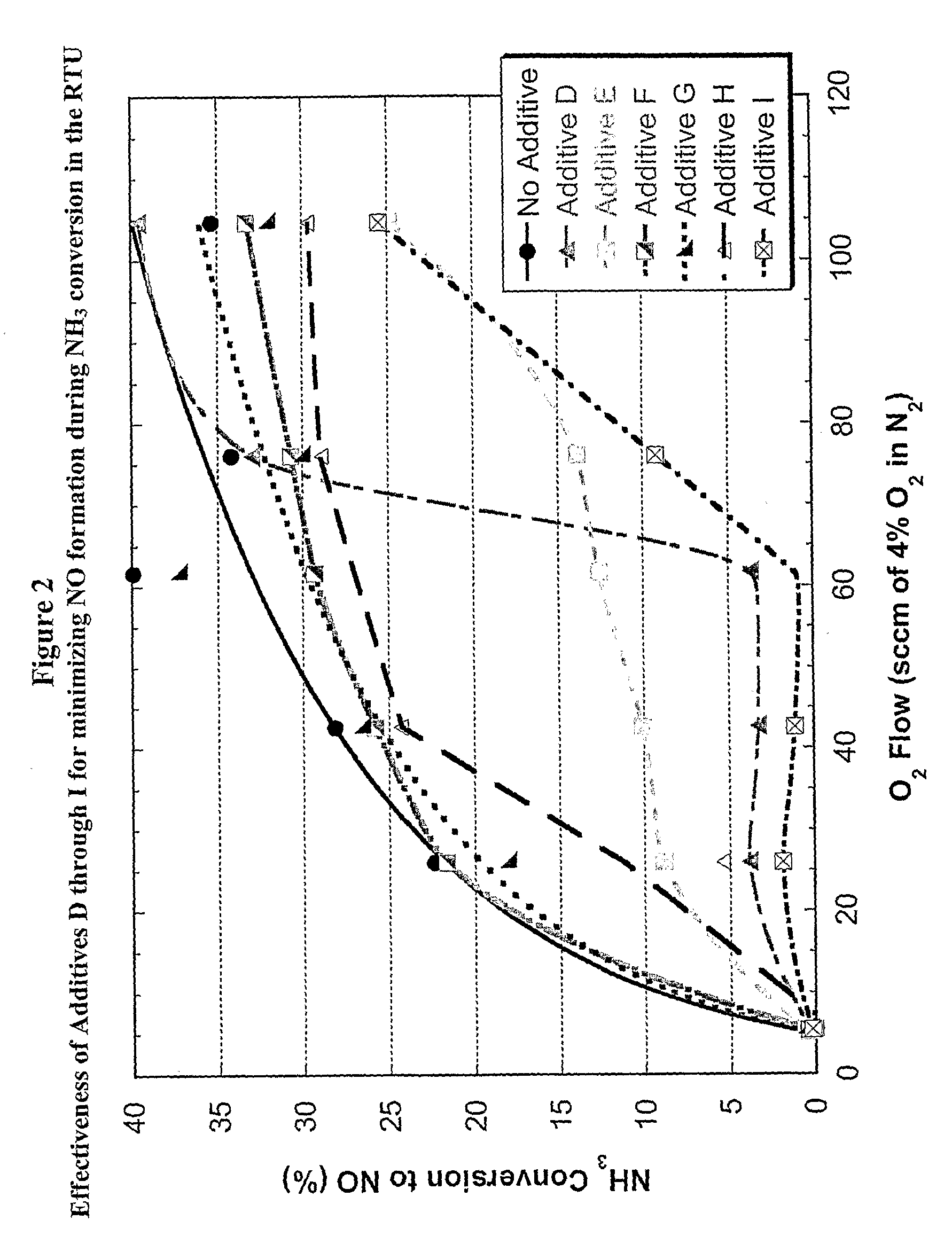NOchi Reduction Compositions for Use in Partial Burn FCC Processes
a technology of nox reduction and composition, which is applied in the direction of physical/chemical process catalysts, metal/metal-oxide/metal-hydroxide catalysts, chemical apparatus and processes, etc., can solve the problem of not being able not being able to discharge untreated into the atmosphere, and being unable to convert all of the co in the reduced gas phase species. , to achieve the effect of reducing nox emissions and low combustion composition
- Summary
- Abstract
- Description
- Claims
- Application Information
AI Technical Summary
Benefits of technology
Problems solved by technology
Method used
Image
Examples
example 1
[0084]A composition comprising 75% ferrierite and 25% alumina sol (Additive A) was prepared as follows. An aqueous slurry was prepared which contained 6521 g of aluminum chlorohydrol solution (23% solids), 4500 g (dry basis) of ferrierite (SiO2 / Al2O3=20, Na2O+K2O<0.2) and enough additional water to make a slurry which contained about 40% solids. The slurry was milled, in a Drais mill, to an average particle size of less than 2.5 μm and then spray dried in a Bowen spray dryer. The spray dried product was calcined for 90 minutes at 593° C. This sample was designated as Additive A and the properties of this additive are shown in Table 1.
example 2
[0085]About 158 g of Additive A was placed in an inclined beaker on a mechanical rotator. A master Rh solution was prepared by diluting 1.001 g Rh from nitrate salt (9% Rh) to 100 g with DI water. The calcined product was then impregnated by gradually spraying on it 16.7 g of the dilute Rh solution further diluted with 75 g DI water, targeting a concentration of 100 ppm Rh on the finished catalyst. The wet impregnated catalyst was dried for 1 hour at 99° C. and then calcined for 1 hour at 593° C. The finished catalyst was designated Additive B.
example 3
[0086]Additive C was prepared using ferrierite which contained Na and K cations (about 1.02% Na2O and 7.08% K2O). An aqueous slurry was prepared which contained 41% solids. The solids in the slurry consisted of 75% ferrierite (sodium and potassium content not included) and 25% alumina from an aluminum chlorohydrol solution (23% solids). The slurry was milled to an average particle size of less than 2.5 μm and then spray-dried. The spray dried product was calcined for about 1 hour at about 425° C. and then washed with sufficient amount of an aqueous ammonium sulfate solution (30% (NH4)2SO4) to reduce the sodium and potassium content. The washed product was then flash-dried and stored. The final product had the properties shown in Table 2.
PUM
| Property | Measurement | Unit |
|---|---|---|
| pore size | aaaaa | aaaaa |
| molar ratio | aaaaa | aaaaa |
| pore size | aaaaa | aaaaa |
Abstract
Description
Claims
Application Information
 Login to View More
Login to View More - R&D
- Intellectual Property
- Life Sciences
- Materials
- Tech Scout
- Unparalleled Data Quality
- Higher Quality Content
- 60% Fewer Hallucinations
Browse by: Latest US Patents, China's latest patents, Technical Efficacy Thesaurus, Application Domain, Technology Topic, Popular Technical Reports.
© 2025 PatSnap. All rights reserved.Legal|Privacy policy|Modern Slavery Act Transparency Statement|Sitemap|About US| Contact US: help@patsnap.com



